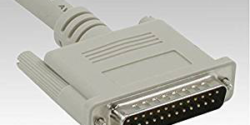External SCSI cables are used to connect SCSI devices, such as hard disk drives, tape drives, and CD-ROM drives, to a SCSI controller or adapter card outside of a computer or server. These cables typically have a standard SCSI connector on one end, which connects to the SCSI device, and a different connector on the other end, which connects to the SCSI controller or adapter card.
External SCSI cables can come in a variety of lengths, depending on the distance between the SCSI devices and the controller or adapter card. They can also be shielded or unshielded, with shielded cables providing better protection against electromagnetic interference (EMI) and other sources of signal degradation.
External SCSI cables are typically designed to be easy to install, with plug-and-play compatibility and no need for special tools or expertise. However, it is important to ensure that the cable is connected correctly and securely to avoid signal loss or other issues.
Overall, external SCSI cables are an important component of SCSI systems, allowing SCSI devices to communicate with each other and with the computer or server to which they are connected. They are widely used in enterprise-level storage systems and servers that require high-speed data transfer and reliable connectivity, as well as in applications such as backup and recovery, video editing, and scientific data analysis.




